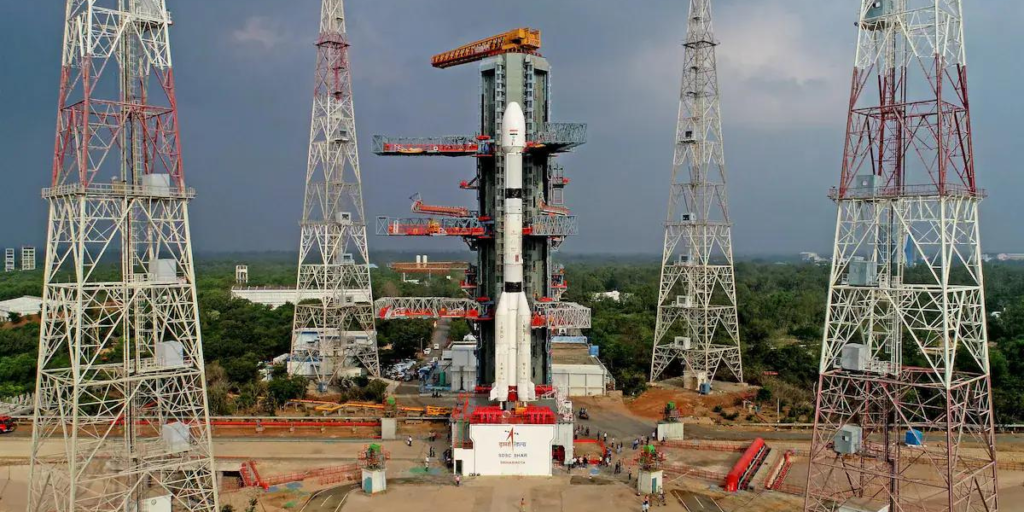The Indian Space Research Organisation (ISRO) achieved another milestone as its meteorological satellite INSAT-3DS was successfully placed into orbit by the Geosynchronous Launch Vehicle F14 (GSLV-F14) on a remarkable Saturday. The INSAT-3DS satellite’s primary objective is to enhance the study of Earth’s surface and oceanic observations, marking a significant advancement in India’s space exploration endeavors.
Table of Contents
GSLV-F14 Launch:
The GSLV-F14, standing at an impressive 51.7 meters tall, embarked on its journey from the second launch pad at the Satish Dhawan Space Centre in Sriharikota, lifting off at precisely 5:35 PM local time. This mission holds immense importance, especially considering the GSLV’s track record, earning it the endearing moniker of the “naughty boy” rocket. It marks the 16th mission overall and the 10th flight utilizing the indigenous cryogenic engine, underscoring ISRO’s commitment to technological advancement and self-reliance in space exploration.

Significance of Mission
The success of the INSAT-3DS mission is pivotal for ISRO, particularly in light of its upcoming assignment to carry the Earth observation satellite, NISAR, later this year. NISAR, a collaborative effort between NASA and ISRO, promises to revolutionize global mapping by providing comprehensive and consistent data on Earth’s ecosystems, ice mass, sea level rise, and natural hazards such as earthquakes and tsunamis. The deployment of INSAT-3DS sets the stage for future endeavors in space exploration, positioning India as a key player in the international space community.
The Evolution of INSAT Series: INSAT-3DS
INSAT-3DS represents the latest addition to the Third Generation Meteorological Satellite series orbiting in the geostationary orbit. Building upon the legacy of its predecessors, including INSAT-3D and INSAT-3DR, launched in September 2016 and still operational, INSAT-3DS is poised to deliver invaluable data for meteorological research and weather forecasting.
Payloads and Capabilities of INSAT-3DS
Comprising four payloads, INSAT-3DS is equipped with an Imager, a Sounder, a Data Relay Transponder, and a Satellite-aided Search and Rescue Transponder. The multi-spectral imager facilitates the generation of high-resolution images across six wavelength bands, enabling the visualization of crucial atmospheric parameters such as water vapor and humidity. Additionally, the sounder contributes to the generation of vertical profiles of the atmosphere, providing essential data on temperature and humidity distribution.

Technological Innovations and Self-reliance
The success of the GSLV-F14 mission underscores ISRO’s strides in technological innovation and self-reliance. By developing and deploying indigenous cryogenic engines, ISRO has significantly reduced its reliance on external sources, bolstering India’s autonomy in space exploration. These advancements not only enhance operational efficiency but also position India as a formidable player in the highly competitive space industry.
Implications for Earth Observation and Weather Forecasting
INSAT-3DS represents a quantum leap in Earth observation capabilities, offering invaluable insights into weather patterns, climate change, and environmental dynamics. The satellite’s sophisticated instruments enable scientists to monitor atmospheric conditions with unprecedented accuracy, empowering meteorologists to make more informed forecasts and mitigate the impact of natural disasters. As climate change continues to pose existential threats, INSAT-3DS emerges as a critical tool for monitoring and addressing environmental challenges on a global scale.
ISRO’s Remarkable Progress in 2024

The successful deployment of INSAT-3DS marks the second mission for ISRO in 2024, following the triumphant launch of PSLV-C58/EXPOSAT mission on January 1. These achievements underscore ISRO’s unwavering commitment to pushing the boundaries of space exploration and harnessing technology for the benefit of humanity.
Conclusion

As ISRO continues to chart new frontiers in space exploration, the successful placement of INSAT-3DS into orbit stands as a testament to India’s growing prowess in the field of satellite technology. With each milestone, ISRO reaffirms its position as a global leader in space research and innovation, inspiring future generations to dream big and reach for the stars.

